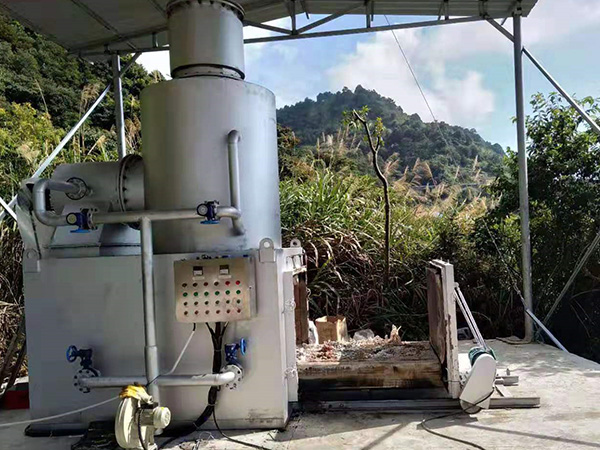There are many non-degradable components in municipal waste. The use of
waste incinerators can achieve the purpose of reducing volume, weight, and waste transportation, and can effectively use the thermal energy generated by waste incineration to generate electricity. Many developed countries have proved through practice that incineration is a the main way to deal with domestic waste at present.
You will be concerned about how much to buy an environmentally friendly household waste incinerator. Here,
Holy Shield rents an answer for you.
The price of a domestic waste incinerator is determined by many factors such as its manufacturing material, incineration performance, and daily processing capacity. Therefore, we should observe many factors when purchasing. We should not blindly compare price, but should pay more attention to their performance,such as:
1. Furnace body material, heat insulation performance
The furnace body must be lined with high-temperature refractory materials, with thermal insulation materials in the middle and thermal insulation materials in the outer layer, which can reduce the heat loss of the furnace body and improve the incineration efficiency. The surface temperature of the incinerator body should be controlled within 50 ℃. The process of the furnace body must strictly prevent flue gas leakage.

2. Destruction rate of harmful substances
The main factors affecting the destruction rate are the followings: incineration temperature, residence time, disturbance and excess air coefficient.
(1) Incineration temperature
Incineration temperature refers to the temperature at which harmful components in waste are oxidized, decomposed and destroyed at high temperature. Generally speaking, increasing the incineration temperature is conducive to the destruction of harmful substances in waste and can inhibit the production of black smoke. However, if the temperature is too high, it not only increases the fuel consumption, but also increases the content of nitrogen oxides in the flue gas. Therefore, it is more reasonable to use an appropriate temperature under the premise of ensuring the destruction rate.
Most of the harmful microorganisms in the waste cannot survive at about 70-100°C, and the incineration temperature for treating general short-chain organic matter is 700-800°C.
(2) Residence time
The residence time refers to the time required for the harmful components in the waste to oxidize and decompose under the incineration conditions, and then complete the harmless substances. The length of the residence time directly affects the destruction rate of the incineration, and also determines the specific size of the furnace.In order to ensure that the waste and combustion products are completely decomposed, the waste is kept in the incinerator at about 600°C for about 1 hour.
(3) Disturbance
In order to decompose all wastes and combustion products, it is necessary to strengthen the full mixing of air, waste and flue gas, expand the contact area with each other, and make harmful substances oxidatively decompose in a short time at high temperature. An excellent incinerator should have a unique air supply system, which can improve the mixing degree of the furnace body with waste gas and flue gas.
(4) Excess air coefficient
The amount of air required for waste combustion is composed of theoretical air volume and excess air volume. The sum of the two determines the oxygen concentration in the incineration process, and the amount of excess air determines the oxygen content in the flue gas. The oxygen concentration in the furnace and the mixing degree of materials and flue gas with oxygen seriously affect the combustion speed and net burning rate of materials. In general, the excess air coefficient shall be 30 ~ 50% of the theoretical air value.

Well, here are some insights and responses from
Holy Shield on the prices of
domestic waste incinerators. It is undeniable that some incinerators with relatively low prices have also appeared on the market. I hope everyone will consider these products with excessively low prices. After all, appropriate discounts are normal, but the prices that are too low still need to be carefully looked at. The performance of the product should not be attracted by temporary price concessions, so as to buy products with no guarantee and poor incineration effect.









